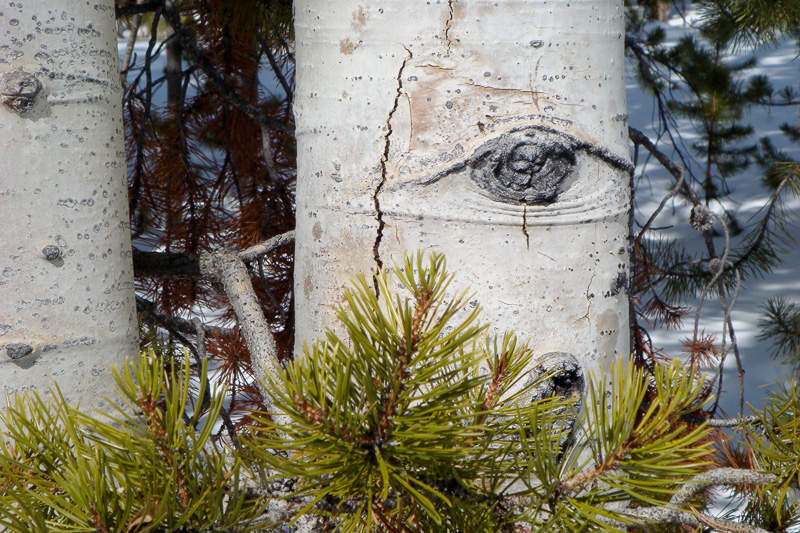
I’m in Pinedale, Wyoming, visiting my daughter Isabel and doing some cross-country skiing among the aspen trees. They have great patterns like eyes on them. Today’s pictures are all from Pinedale, which is a nice example of an RR “real reality” far richer than any VR “virtual reality” we’re ever going to see.
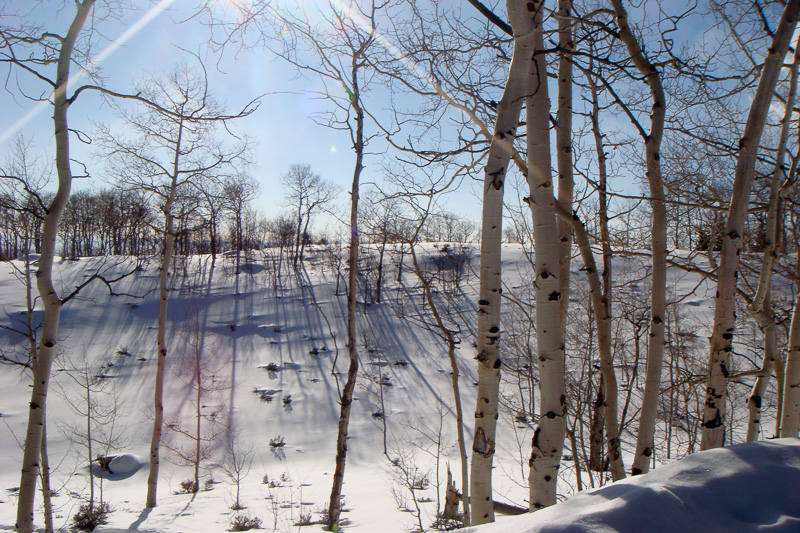
In the last couple of weeks I twice noticed people online questioning my scientific accuracy when I claim in Postsingular that it’s bogus to talk about porting humanity into a complete virtual model of Earth. So today I want to explain some of the reasoning behind my claim.
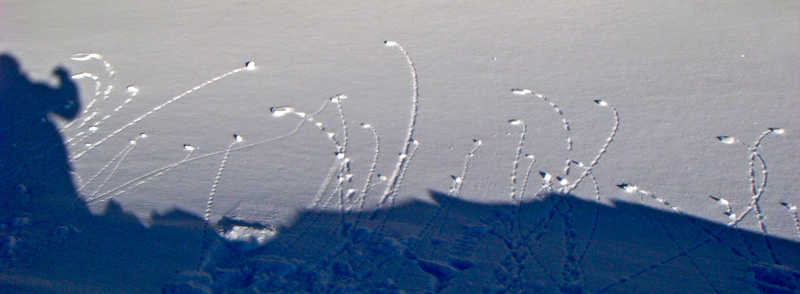
Arguments for Vearth are sometimes start by talking about an imaginary substance wittily dubbed “computronium” by one of my favorite writers, Charles Stross. In Accelerando, he says computronium is “matter optimized at the atomic level to support computing.”

Although it’s a cute idea, I think computronium is a fundamentally spurious concept, an unnecessary detour. Matter, just as it is, carries out outlandishly complex chaotic quantum computations just by sitting around. Matter isn’t dumb. Every particle everywhere everywhen is computing at the maximum possible rate. I think we tend to very seriously undervalue quotidian reality.
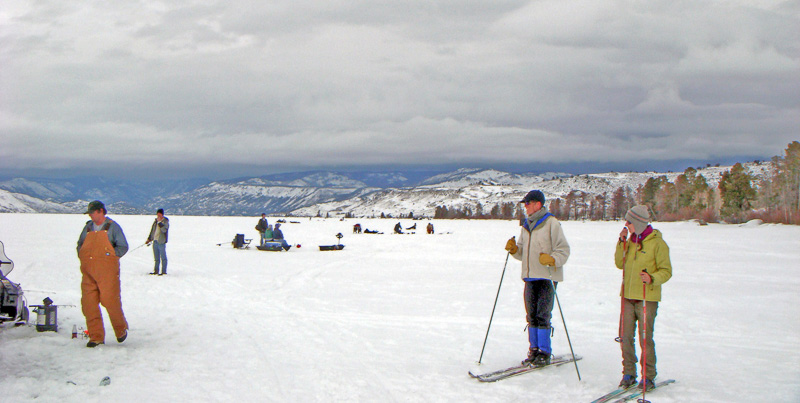
[The ice fishing derby on Lake Fremont in Pinedale]
In an extreme vision—which is the one I disparage in my novel Postsingular—Earth is turned into a cloud of computronium which is supposedly going to compute a virtual Earth—a “Vearth”—even better than the one we started with.
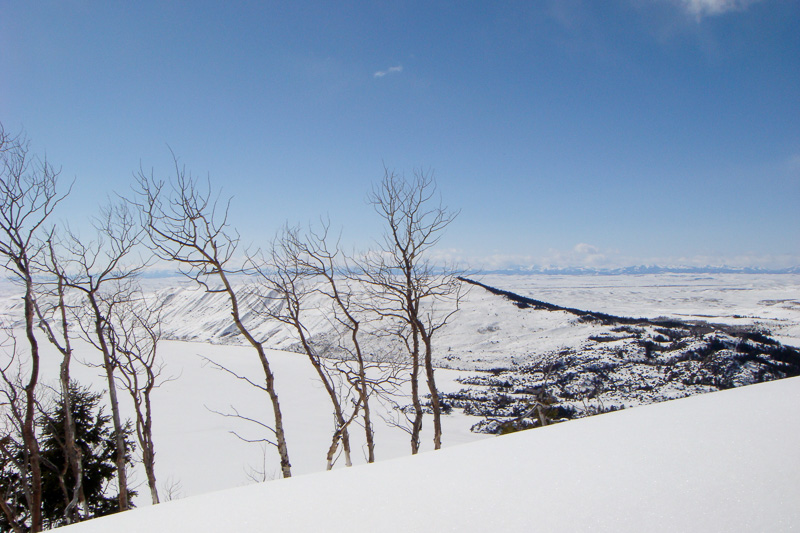
This would be like filling in wetlands to make a multiplex theater showing nature movies, clear-cutting a rainforest to make a destination eco-resort, or killing an elephant to whittle its teeth into religious icons of an elephant god.
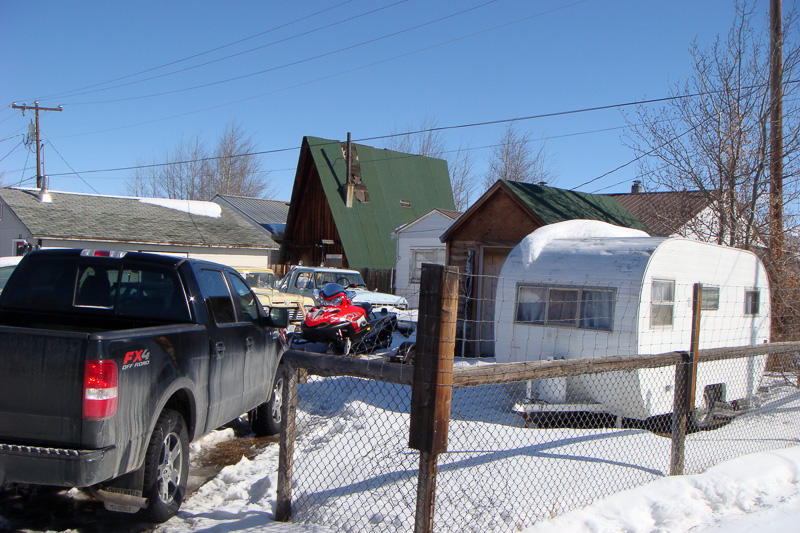
[Alley near the Teton Court Motel]
Ultrageek advocates of the Vearth scenario like to claim that nothing need be lost when Earth is pulped into computer chips. Supposedly the resulting computronium can run a VR (virtual reality) simulation that’s a perfect match for the old Earth.
As I’ll explain below, this is factually incorrect. Before getting into that, I might also ask why someone would passionately want to believe that we can be translated from flesh into bits? There’s something ascetic and life-hating about the notion. It’s a bit like a religious belief; one thinks of the old “work now, get rewarded in heaven” routine.

[Game heads on display in Ridley’s Grocery (formerly Faler’s)]
Anyway, let’s get back to my main point, which is that VR isn’t ever going to replace RR (real reality). We know that our present-day videogames and digital movies don’t fully match the richness of the real world. What’s not so well known is that computer science provides strong evicence that no feasible VR can ever match nature.
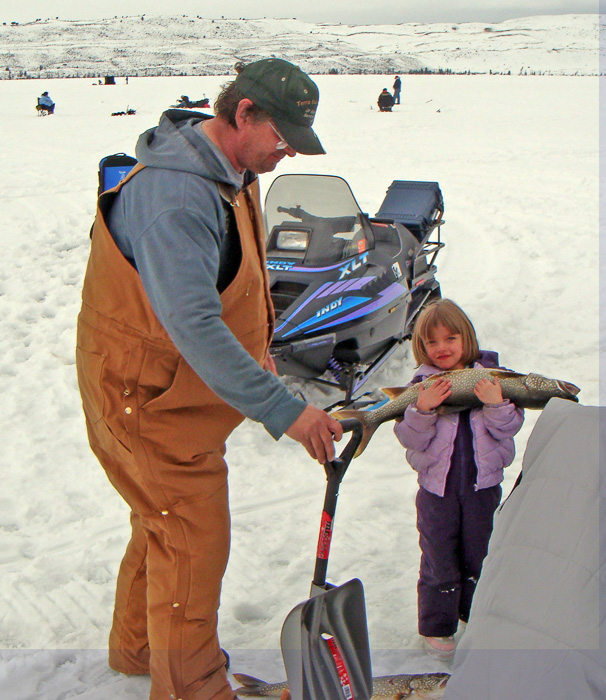
[Girl holding a fish as if it were a stuffed animal]
This is because there are no shortcuts for nature’s computations. Due to a property of the natural world that I call the “principle of natural unpredictability,” fully simulating a bunch of particles for a certain period of time requires a system using about the same number of particles for about the same length of time. Naturally occurring systems don’t allow for drastic shortcuts.
For details see The Lifebox, the Seashell and the Soul, or Stephen Wolfram’s revolutionary tome, A New Kind of Science—note that Wolfram prefers to use the phrase “computational irreducibility” instead of “natural unpredictability”.

[On a ridge above Fremont Lake on a climb led by Sherpa Iz-teng]
Natural unpredictability means that if you build a computer sim world that’s smaller than the physical world, the sim cuts corners and makes compromises, such as using bitmapped wood-grain and cartoon-style repeating backgrounds. Smallish sim worlds are doomed to be dippy Las Vegas/Disneyland/Second Life environments.
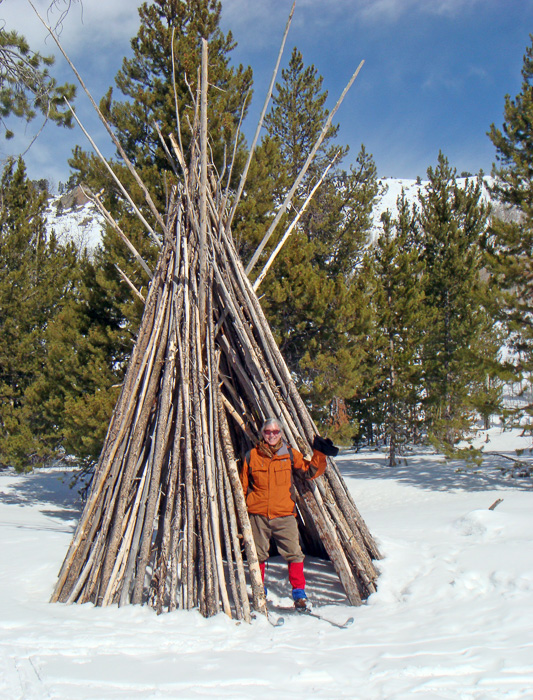
[A lo-resolution lodging near Pinedale]
But wait, answer the true-believer ultrageeks, if you do smash the whole planet into computronium, you have potentially as much memory and processing power as the intact planet possessed. It’s the same amount of mass, after all. So then we could make a fully realistic world-simulating Vearth with no compromises, right?
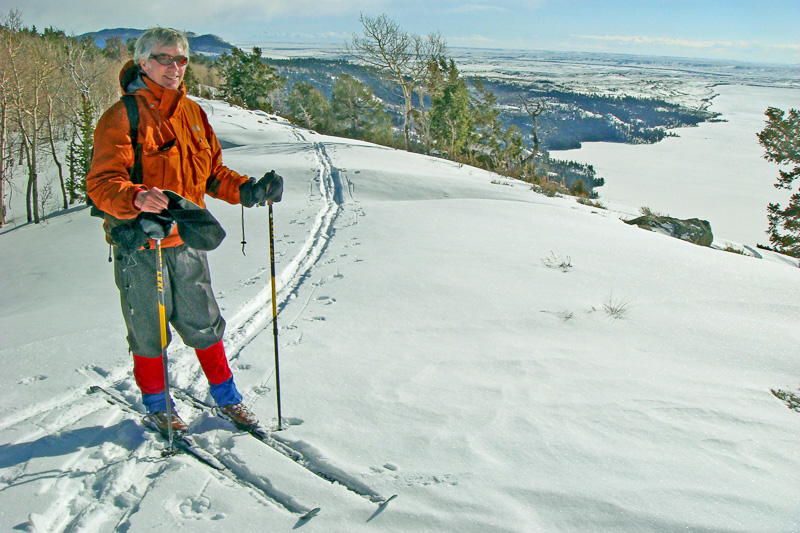
Wrong. Perhaps you can get the hardware in place, but there’s the vexing issue of software. Something important goes missing when you smash Earth into dust: you lose the information and the embodied software that was embedded in the world’s behaviors. An Earth-amount of matter with no high-level programs running on it is like a powerful new computer with no programs on the hard drive.
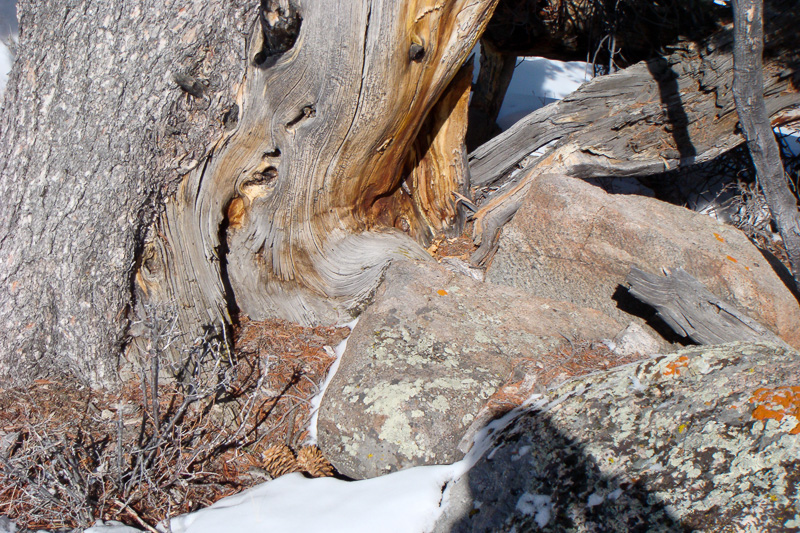
[Non-bit-mapped wood grain]
Ah, says the VR true believer, what if the nanomachines first copy all the patterns and behaviors embedded in Earth’s biosphere and geology? What if they copy the forms and processes in every blade of grass, in every bacterium, in every pebble, and so on?
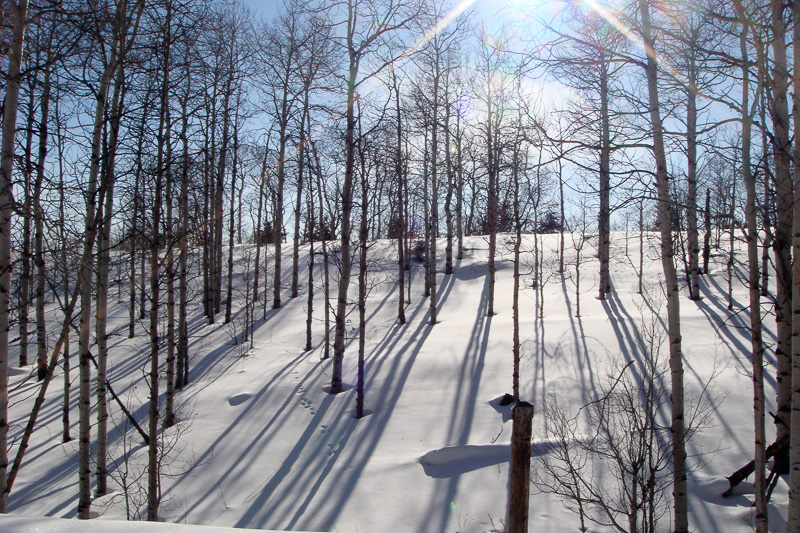
But, come on, if you want to smoothly transform a blade of grass into some nanomachines simulating a blade of grass, then why bother pulverizing the blade of grass at all? After all, any object at all can be viewed as a quantum computation! The blade of grass already is an assemblage of nanomachines emulating a blade of grass. To the extent that you can realize an accurate VR world, the exercise becomes pointless.
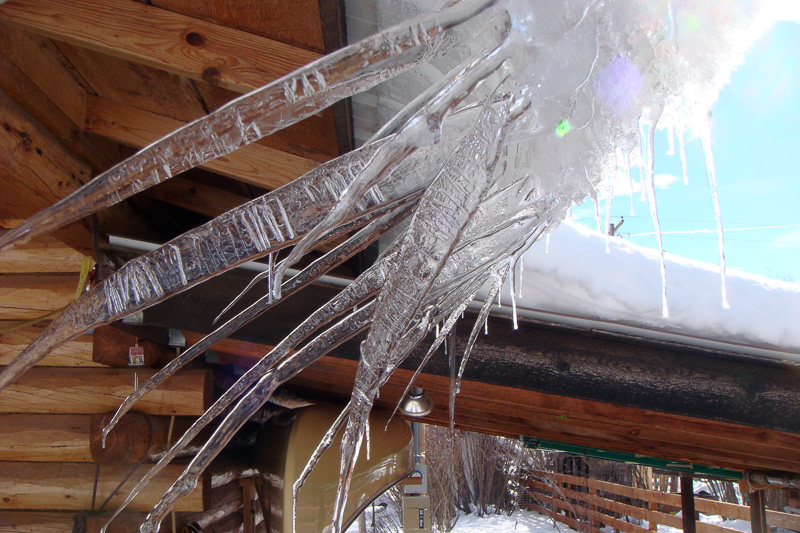
Just as she is, Nature embodies superhuman intelligence. She’s not some piece of crap to tear apart and use up.
***
By the way, I have written a full-length essay expanding on some of these topics; it’s called “The Great Awakening,” and you can read it free online. It appeared in Asimov’s SF magazine in August, 2008, and in the anthology Year Million, edited by Damien Broderick, from Atlas Books in August, 2008.
For my answers to the many comments on this post, see my next blog post.








